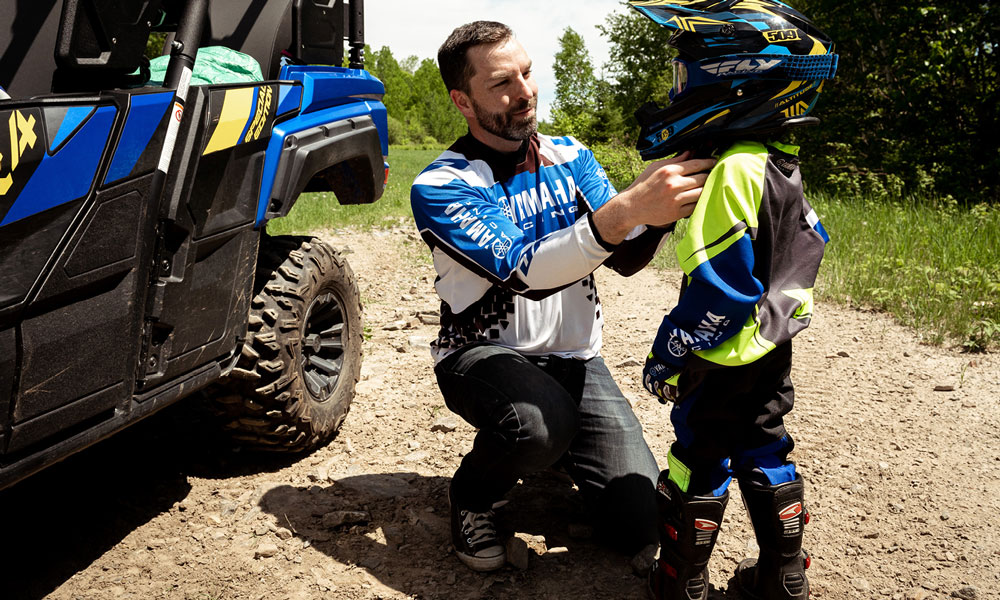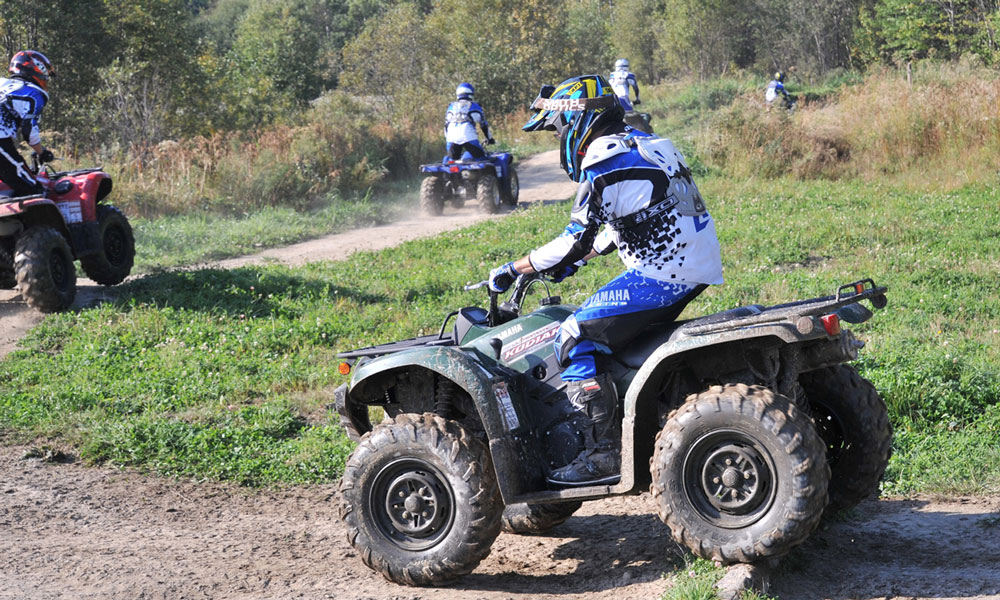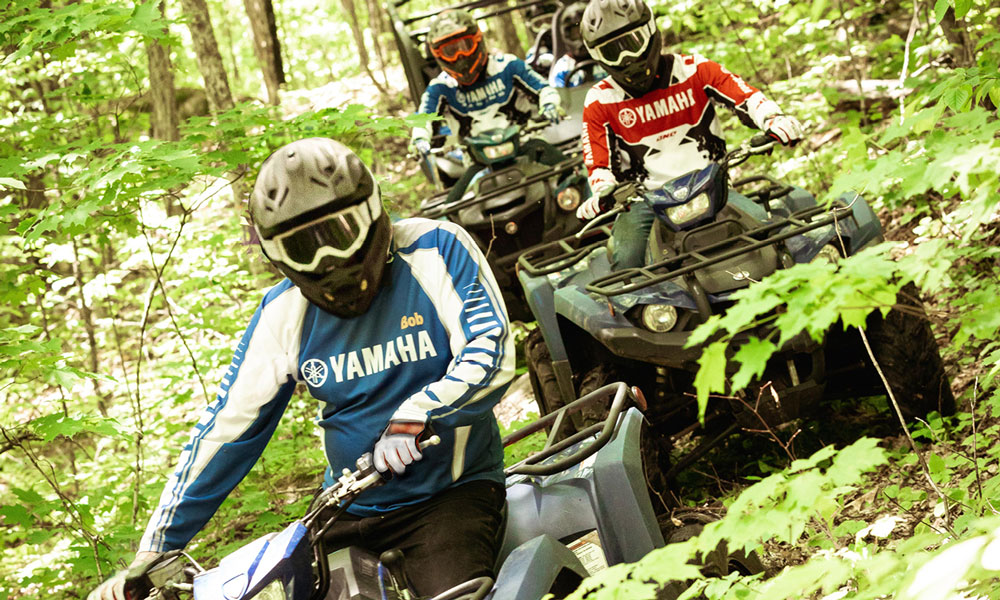By Bob Island
You’ve just purchased your first ATV – now what? If you don’t have much experience or it’s your first time on an ATV, you probably have some questions. A seasoned rider and instructor, Bob Island has been teaching newcomers to ride ATVs at Yamaha Motor Adventures for years. Here, he shares his top five tips for first-time or inexperienced riders.
Proper Riding Gear
Not only is it extremely important to ensure you have all the right gear, but that it fits properly. This helps keep you safe and comfortable. Riding without a helmet is not only dangerous but also against the law. Riding boots provide support and protection for your feet and lower legs, and allow you to put more force on this part of the body while riding. In addition to a helmet and boots, goggles, gloves, pants and a jersey not only provide extra padding but help keep you comfortable. This is why all of this gear is provided for rides at Yamaha Motor Adventures – and staff are there to help get the exact right fit.

Rider Position
ATV riding is a physical exercise. You must be very fluid, constantly moving around on the seat when riding technical terrain. Many new riders sit too far back in the seat with their body weight over the back wheels, which means there’s not enough weight over the front. By keeping your body weight in the centre of the vehicle, you get even weight distribution in all four corners when riding an ATV. Keeping your elbows bent and squeezing the machine with your legs will improve the overall handling of the vehicle. This will also give your arms and hands a rest. Stand up riding is a great option over rough terrain, with your knees slightly bent, your body acts as additional suspension.

Throttle and Braking Control
Learn how to go slow before you go fast. Traction and control are achieved with good throttle and braking control, so practice using these as smoothly as possible. Easy on the throttle, easy off the throttle and easy on the brakes. Spinning tires means you’ve lost traction and control. Engine braking is a great way to help with traction and control. It uses the compression of the engine to slow down the ATV without using the brakes. Use 4-wheel drive going down a steep, wet, slippery hill. Engine braking in 4-wheel drive will slow the vehicle down and limit the tires from slipping.
Cornering
At Yamaha Motor Adventures, a good amount of time is spent training and coaching cornering. A rider practices this skill by learning how to lean into the corner to avoid tipping. Generally, the faster the speed through a corner, the more you must lean to compensate. When stand-up riding, you also need to lean into the corner while putting more weight on the foot on the running board on the inside of the corner. This provides more traction on the inside front tire and helps it stick through the corners.

Hills and Off Camber Riding
Keep your weight close to the hill. When riding uphill, the rider needs to lean forward, which is easily done if you keep your elbows bent. Riding downhill, the rider needs to stretch back, keeping the weight up towards the hill. When side-hilling (riding midway around the hill), the rider needs to lean up the hill, again keeping weight towards the hill – whether in a sitting or standing ride position.
Follow these top tips for ATV riders from Bob at Yamaha Motor Adventures to make the most of your days on the trail!


 All Yamaha News
All Yamaha News